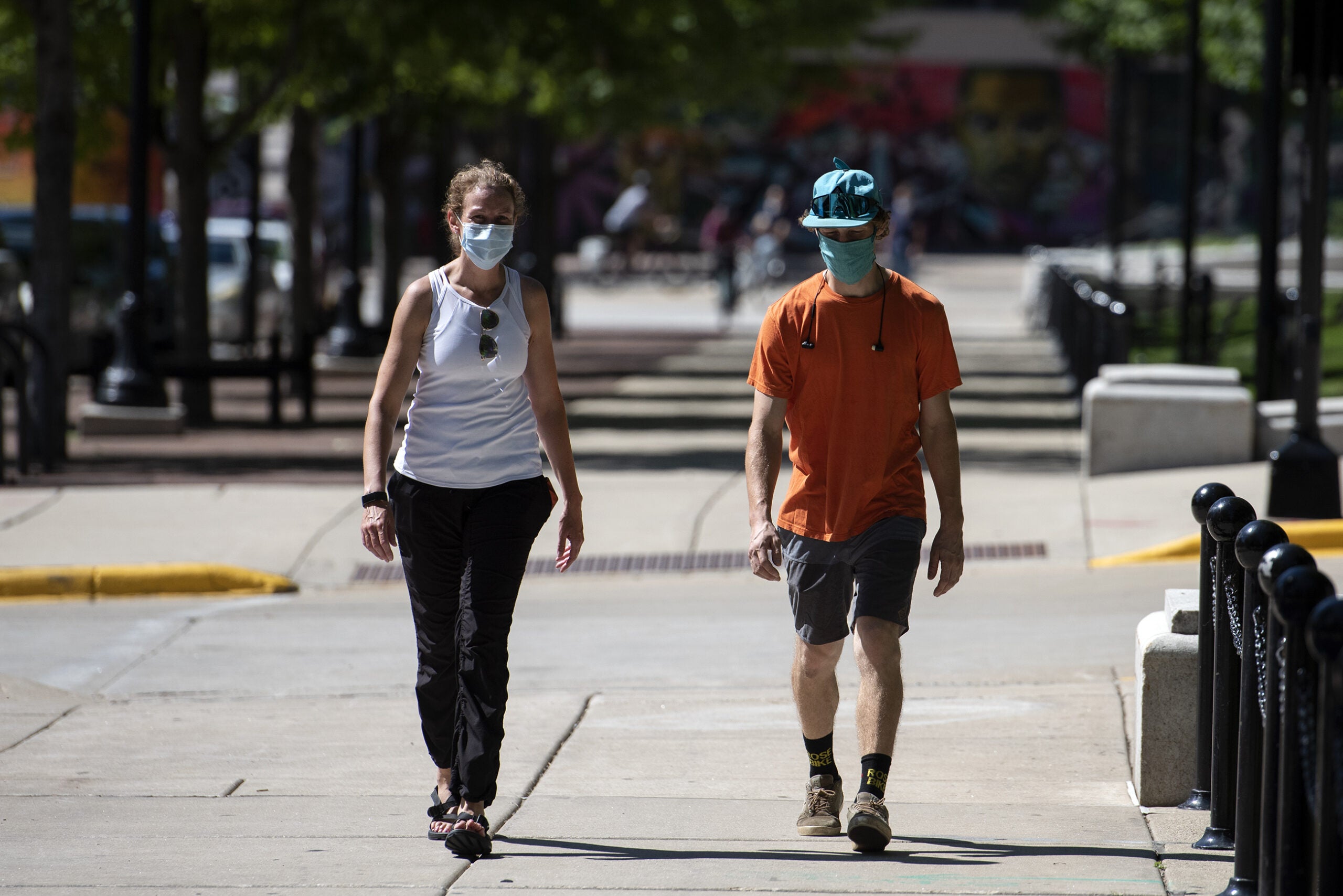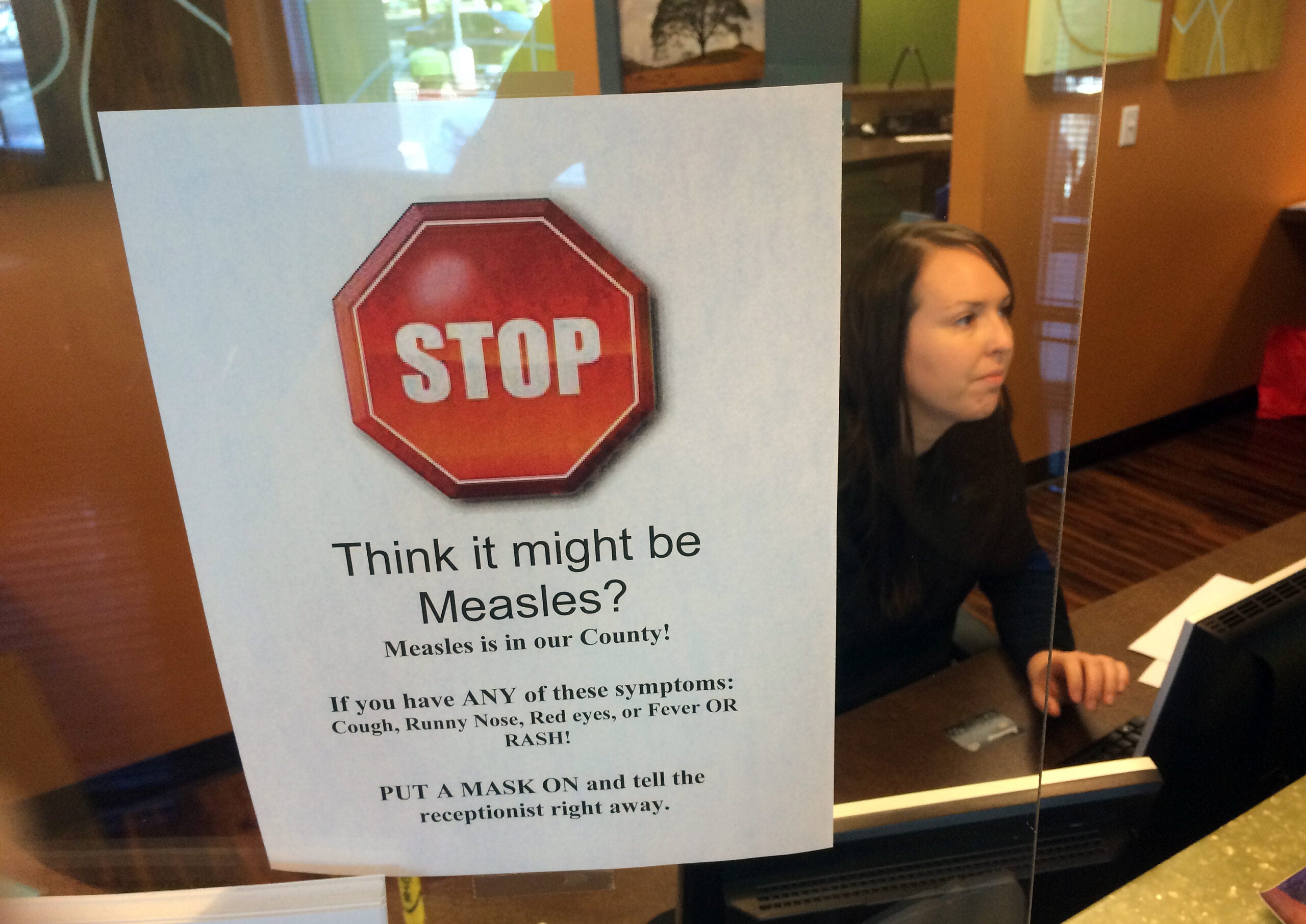Newly reported cases of COVID-19 remain high, with over 1,000 positive cases reported in a single day for the second time this week, based on the latest data published by the state’s Department of Health Services.
“The continued trend this week of positive cases is dangerous, unsustainable and dilutes months of effort” to contain the disease, said Gov. Tony Evers, whose stay-at-home order was struck down in May by the state supreme court.
News with a little more humanity
WPR’s “Wisconsin Today” newsletter keeps you connected to the state you love without feeling overwhelmed. No paywall. No agenda. No corporate filter.
DHS reported 1,052 cases of the virus on Thursday, bringing the average for the past seven days to a new all-time high of 896 daily cases.
One week ago, the average was 817 daily cases. Cases have been rising steadily over the past month, with the seven-day average increasing every day save two since June 23.
A third of all positive coronavirus cases in July were among people in the their 20s. Wisconsin Department of Health Secretary-designee Andrea Palm said this is one factor in the upward trend, along with people of all ages reporting they had interacted with groups at parties, bars and barbecues.
The latest figures bring the overall total of positive cases in Wisconsin to 45,899, according to the DHS. A total of 878 people in Wisconsin have died from COVID-19, with 13 new deaths reported on Thursday.
According to DHS, 6.9 percent of all test results reported on Thursday were positive for COVID-19, bringing the average percentage of positive tests over the past seven days to 7.7. The seven-day average a week ago was at 7.2 percent.
The percentage of positive tests is often read by public health officials as a measure of overall testing levels. A high rate could indicate that testing in the state is limited, and skewed toward those already flagged as potentially having the virus. A lower rate could indicate testing is more widespread.
Changes in the test positivity rate can also speak to a virus’ spread, if the size and makeup of the testing pool stays consistent.
Wisconsin’s daily testing capacity — based on the availability of test supplies and adequate staffing — has grown from 120 available lab tests in early March to 24,156 as of Thursday. The number of actual tests reported on Thursday was 15,264, the second-highest total since the start of the pandemic.
Overall, DHS has recorded a total of 824,741 tests over the course of the pandemic. 778,842 have come back negative.
COVID-19 activity varies heavily from county to county. The latest coronavirus activity data from DHS, released once per week each Wednesday, showed that 58 counties had a “high level” of coronavirus activity. Activity level designations are based on “burden,” or the number of new cases per a county’s population over a 14-day period, as well as whether there’s an upward or downward trend in new cases.
On Wednesday, counties with the highest case rates per capita included Iron, Milwaukee, Brown and Racine. The counties with the most significant upward trends included Lincoln and Racine.
There have been confirmed cases in all 72 of Wisconsin’s counties, and based on the data from last Wednesday, all counties had at least one new case over a two-week period.
Though COVID-19 activity levels continued to be high in Marquette, Dane and Monroe counties, each one reported a downward trajectory in cases.
___________________________
DHS still has a dashboard showing Wisconsin’s progress on gating criteria under the now-defunct Badger Bounce Back Plan. Those gating criteria would have been used to determine when it would be safe to begin reopening the state, prior to the state Supreme Court ruling that ended a statewide stay-at-home order. The state has never met all six of the criteria at once.
Two of the criteria are a statistically significant 14-day downward trend in COVID-like cases reported in emergency departments, and a similar downward trend for influenza-like cases in emergency departments. State data indicates a decline in COVID symptoms but not flu-like illness.
According to DHS, 4,273 people have been hospitalized because of the virus as of Thursday, meaning at least 9.3 percent of people who have tested positive for the new coronavirus in the state have been hospitalized. DHS officials said they don’t know the hospitalization history of 15,405 people, or 34 percent.
Wisconsin Public Radio, © Copyright 2026, Board of Regents of the University of Wisconsin System and Wisconsin Educational Communications Board.





